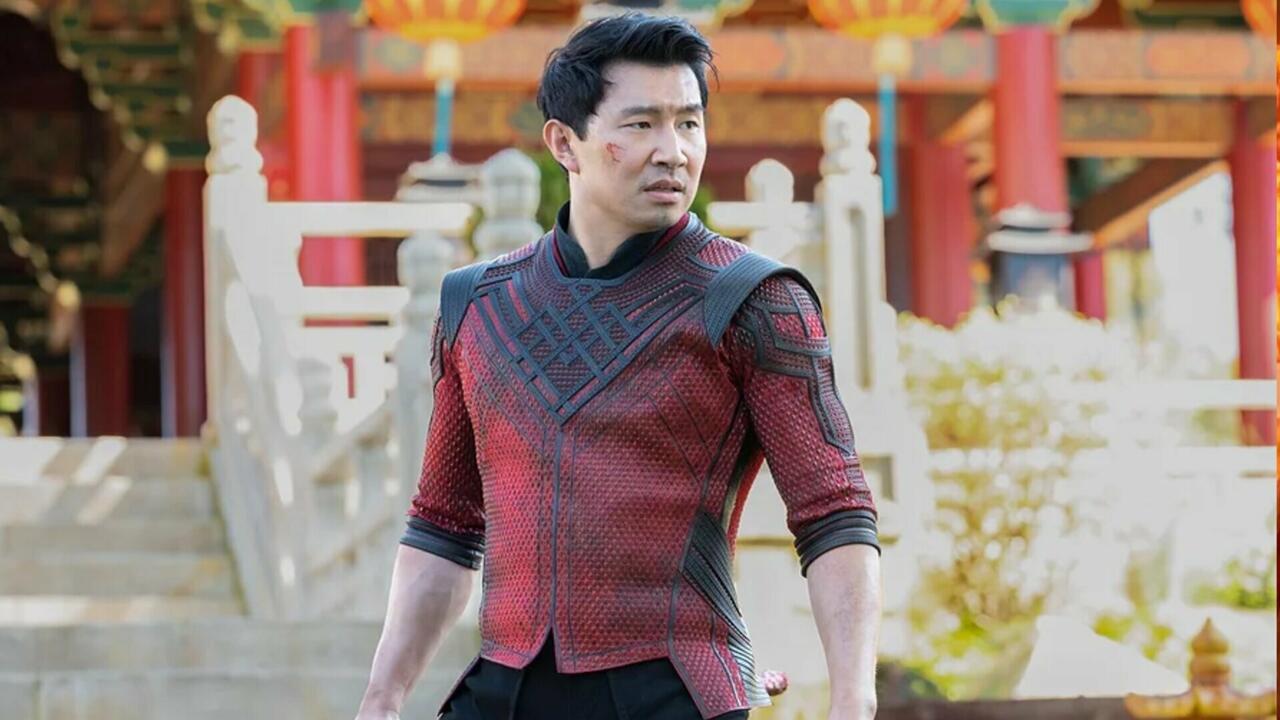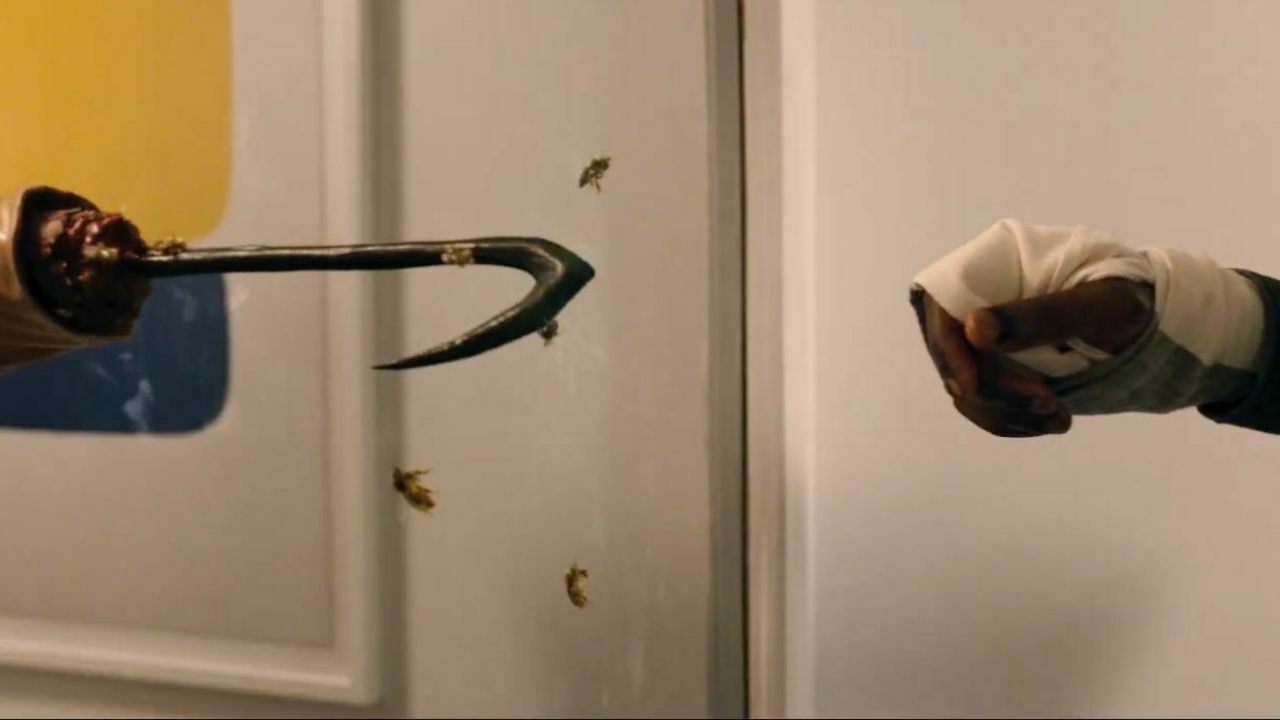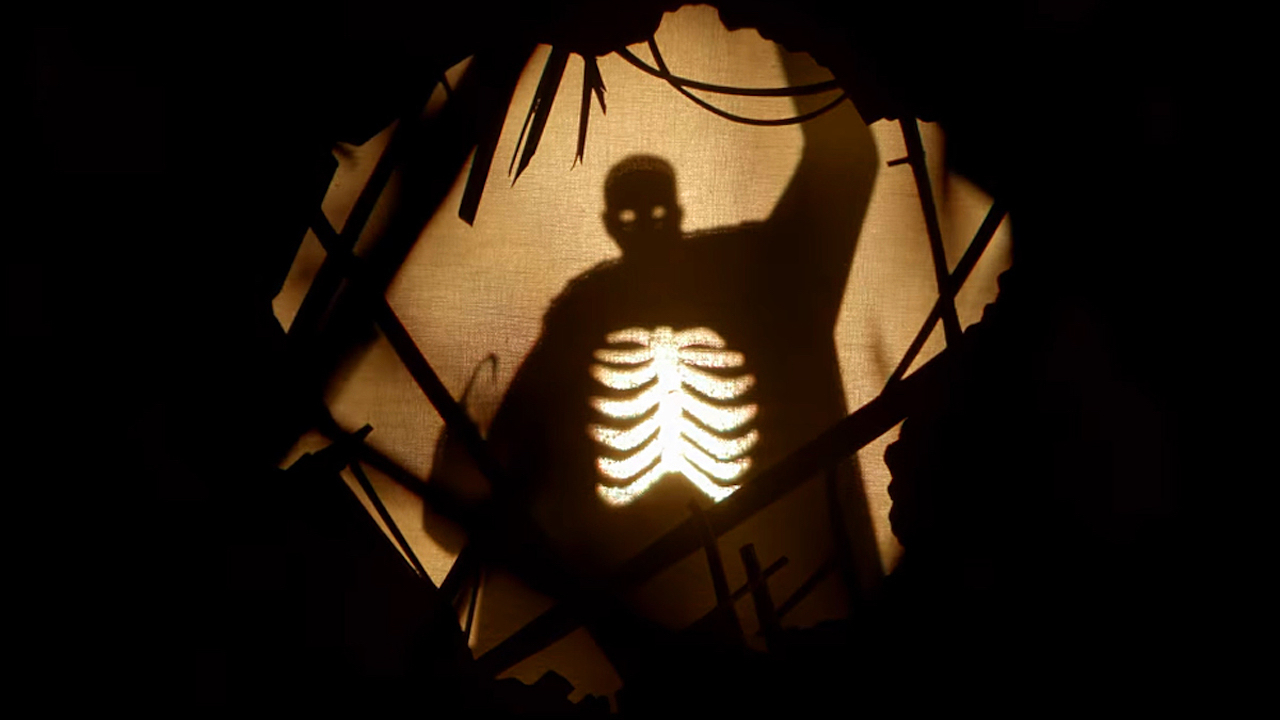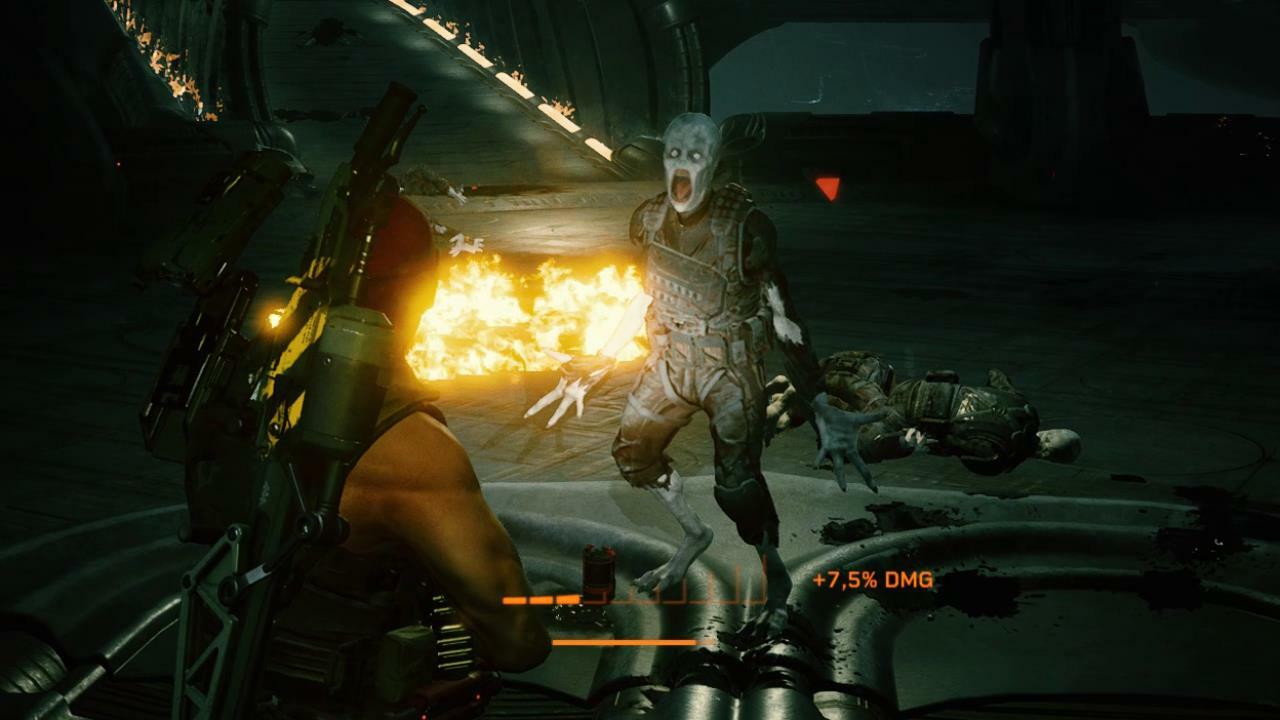In Ted Lasso Season 2 Episode 5, “Rainbow,” the eponymous coach tries to cheer up the losing AFC Richmond team by describing the philosophy of “Rom-communism.” You have to trust, Ted tells his squad, that things will work out, like they always do in romantic comedies–maybe not the way you want, maybe not the way you expect, but they will, in fact, work out.
At the time, it struck me as a weird thing for the coach of a losing soccer club to tell his struggling team. I get what Ted was going for–it’s a philosophy of avoiding frustration and hopelessness about things outside of your control, and trusting that this, too, shall pass. For a guy whose big central tenet is “Believe,” outwardly, it’s an idea that tracks.
But something about the whole speech felt wrong, somehow. Ted’s job is to motivate players to win, and his philosophy of believing in people is an active approach, pushing them to do better, to achieve more. Rom-communism is a passive ideal, and poorly suited to a situation in which the team is struggling. “Don’t sweat the losses” is good advice–“trust that everything will handle itself,” though? That’s not coaching, that’s wishful thinking, and it seems like something that doesn’t jive with what we’ve previously seen of Ted’s personality.
In fact, a lot about Ted has felt “off” this season, and not just in its latest episode. The season has been criticized by some as hitting a “sophomore slump,” largely because there doesn’t seem to be much overarching conflict going on, and because some of the humor is weaker than in the much-loved first season. Most episodes, including “Rainbow,” seem to wrap up interpersonal conflicts with a nice bow in the space of 40 or so minutes. Despite Richmond’s struggles, everyone seems to be doing well on a personal level. The characters are happy, or getting there, and they’re helping each other, or trying to. Things at AFC Richmond seem generally pretty easygoing, outside of the constant losing.

It’s possible that Ted Lasso really is just suffering from a downturn after a hit debut, but I don’t think that’s the case. Rather, the changes between Season 1 and Season 2–the more contained episodes, the neatly solved problems, the generally cheery cast of characters–belie the real turmoil of Season 2. That’s because the overarching conflict has been, so far, almost completely subtextual. Everyone else might be doing pretty well, but Ted is falling apart.
While we saw outward signs of Ted’s struggles in Season 1, including the difficulty of dealing with his divorce and a full-on panic attack, the signs have been much more subtle in Season 2. As mentioned above, Ted just seems a little different. It’s something that’s playing through his interactions with people, and gets highlighted in the progressively increasing desperation of his “Ted-isms.”
Good example: Ted was walking out to the pitch ahead of the game at the end of “Rainbow,” when Dr. Sharon Fieldstone called out his name as she came out of her office behind him. Ted whipped around and responded by calling back to the doctor, then just shouting random words, naming the things he could see around him–“ceiling, floor, trash can.” In the moment, it was weird. Ted throws out his folksy jokes all the time, but he knows when someone is trying to get his attention, and shouting random words back at them almost came off as rude. What’s more, it wasn’t especially funny, and part of what made Ted Lasso a standout in Season 1 was how often the unexpected, pop culture reference-laden banter from Ted stirred up laughs.
That’s an underlying thread of the season as well. While other characters have stepped up with a lot of humor–looking at you, Roy Kent–the jokes delivered by Ted have been strained. Where he dropped gags and made references as a breezy matter of relating to people in Season 1, in Season 2, the punchlines take more setup and leave less impact. Ted was funny in Season 1. In Season 2 he’s kind of annoying.
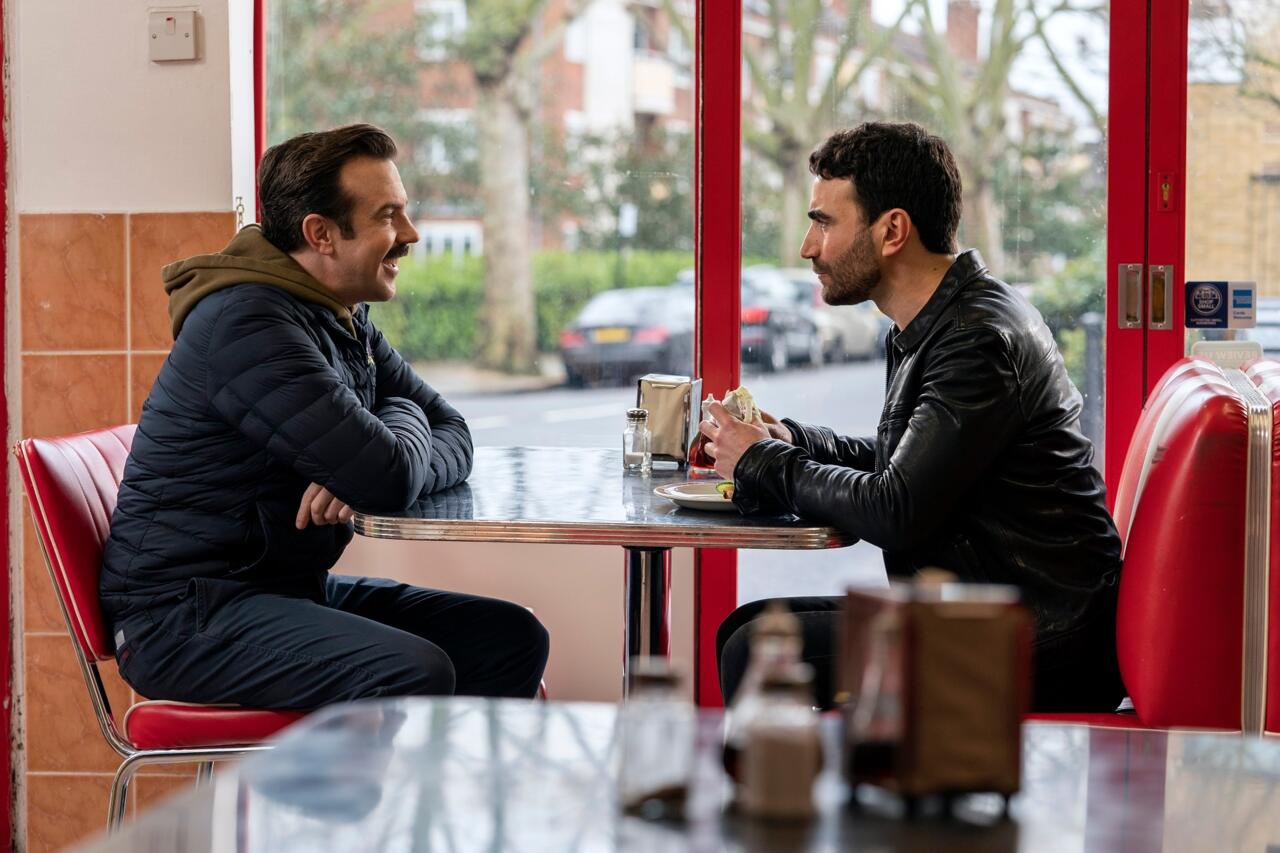
We saw that when Ted chased down Roy at his favorite kebab place in “Rainbow.” Ted pops up, and when Roy offhandedly makes a comment about the restaurant being “like my church,” Ted runs with the gag throughout the whole encounter. “Who knew transubstantiation could happen with a pita?” he jokes, a gag that only plays because of Roy’s ever-annoyed reaction, and not because of the strength of the line itself. Even Ted’s appeal to get his former player to join the coaching staff feels half-hearted.
In general, so many of Ted’s interactions this season seem forced. His jokes come hard and fast, and he’s often almost speaking too quickly to be understood. Moments like the hallway interaction with Dr. Fieldstone are strained, as if Ted is playing the role of himself, but many of his other one-liners leave the other characters bewildered, until he finally explains the punchline. Though he’s always smiling, that smile appears plastered on. There’s strain in his eyes.
It’s a testament to the talent of Jason Sudeikis that it’s possible to pick up on these subtle differences in Ted, but it is possible to pick up on them. Ted in Season 2 seems like he’s barely holding on, fighting extremely hard simply to maintain his own personality. In a real sense, it’s all he has, but being himself, exuding the Ted Lasso personality, has stopped happening naturally. His charged, hyper interaction with Fieldstone when she first appeared in the office–an amped-up version of the way he first met and endeared himself to Rebecca–wasn’t the lighthearted means of establishing friendship and common ground with someone new, but seemed fueled by desperation. A lot of the time in Season 2, Ted being Ted looks like work.
In my view, he’s struggling to cope. This is a guy whose life was torn apart in the first season, and who hasn’t really dealt with so much personal trauma before now. His family is both physically and emotionally distant, and he’s unmoored. And in a big way, his positive influence on the people around him has had a negative influence on Ted himself. More runtime each episode is dedicated to the rest of the ensemble cast, which is good–they’re great. But as in “Rainbow” or in the Christmas episode, “Carol of Bells,” we’re spending more time with everyone else and less time with Ted. When Nate has a problem in “Rainbow,” he goes to Rebecca and Keeley, who help him solve it. Ted has helped engender a community where the people around him are positive and excited to lift one another up, but we’re seeing a feedback loop where Ted has started to make himself obsolete. It furthers his isolation.

And we’re seeing that isolation more and more. Ted’s intention during “Carol of Bells” was to spend Christmas alone, committing to several rewatches of It’s a Wonderful Life, an uplifting movie that also carries darker tones and concerns suicide. As mentioned, he seems distracted and unconcerned about Richmond’s struggles in general. He’s altogether clueless about Nate’s apprehension about Roy joining the coaching staff, and earlier in the episode, openly laughs at Nate when the younger coach suggests that he’s the “big dog” who should talk to Isaac about his attitude as captain. Ted realizes belatedly that Nate was serious, and that laughing might have hurt his feelings, and we watch Coach Beard affirm that he picked up what Nate was putting down–but Ted, ever in tune with how everyone else is feeling, missed it.
And then there’s Ted’s general aversion to therapy and seeming mistrust of Fieldstone. His interactions with her are especially tense, and she causes his mask to slip a few times–when they first meet and she shuts down his meet-and-greet please-like-me routine, and again in “Rainbow,” when he quotes the lyrics of “Under Pressure” to explain himself to her, but which sound just a little too pointed to be driving the eventual joke about stress. “I’m just terrified from knowing what this world is about,” Ted says, the ever-present smile fading a bit.
Yes, eventually, Ted will wind up in therapy with Dr. Fieldstone; it’s a plot point that’s inevitable. How he gets there, though, is an open question, and it seems like things are going to get a lot worse for Ted before they get better. His effervescent personality, his constant need to attend to and help others, and his inability to face how he really feels, even as far back as Season 1, are building to a boil.
Those things about Ted are, so far, preventing the people around him from realizing how bad things are for him. But we’re starting to see cracks in the facade. Coach Beard seems to be taking notice of what’s going on with Ted, and Dr. Fieldstone is definitely aware that something is up with him. But Ted is clearly closed off, to his friends and to his feelings, about what has happened in his life. And that’s the conflict of this season, subverting everything built up in the first. Season 2 isn’t about some big villain that Ted must use his unflinching kindness to stand against. It’s about the internal struggle of living for others, dealing with trauma, and the ways that depression can alter life in all aspects. It’s about how pain can hide behind a smile, how difficult it can be to ask for help, and how feeling like you have an inability to lift yourself out of that pain can amplify it. Ted Lasso is building to a climax, and the fact that it’s not obvious is the point–we don’t always know when someone close to us is suffering.

